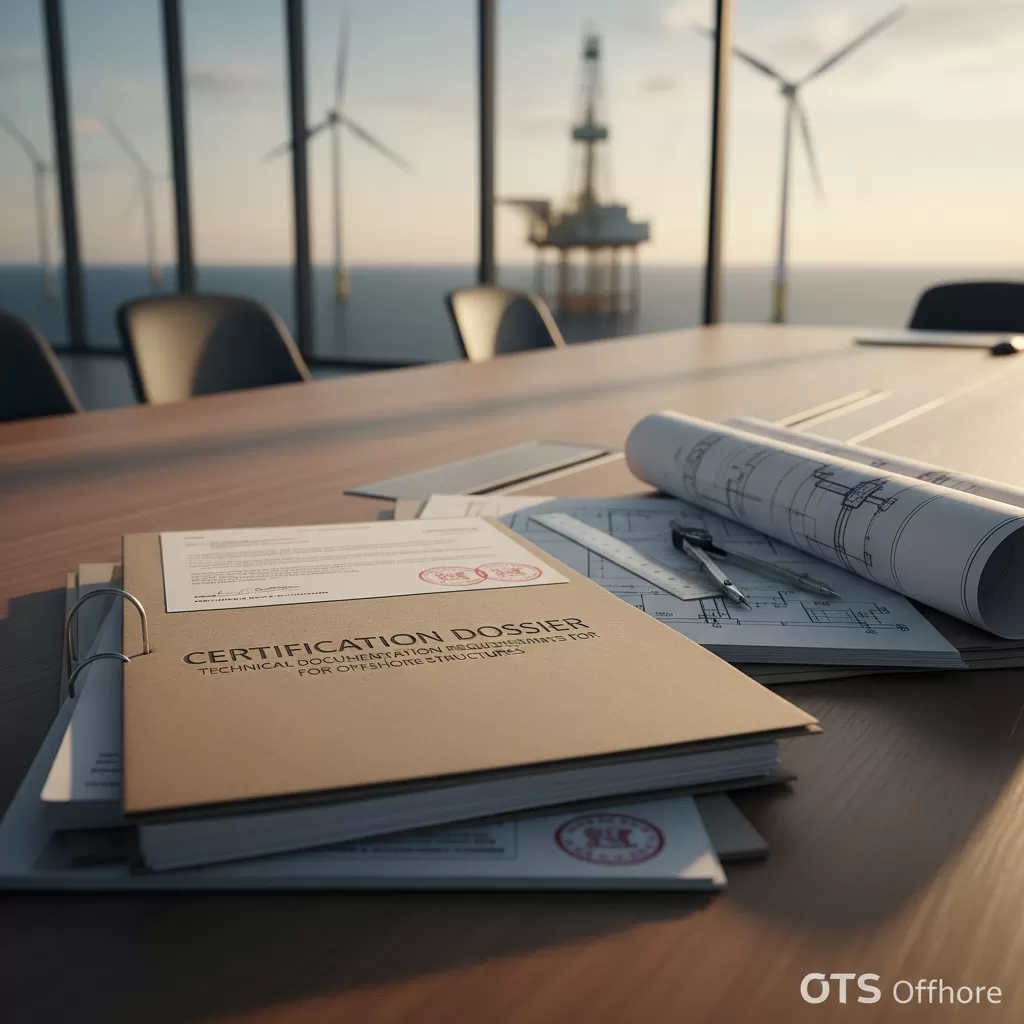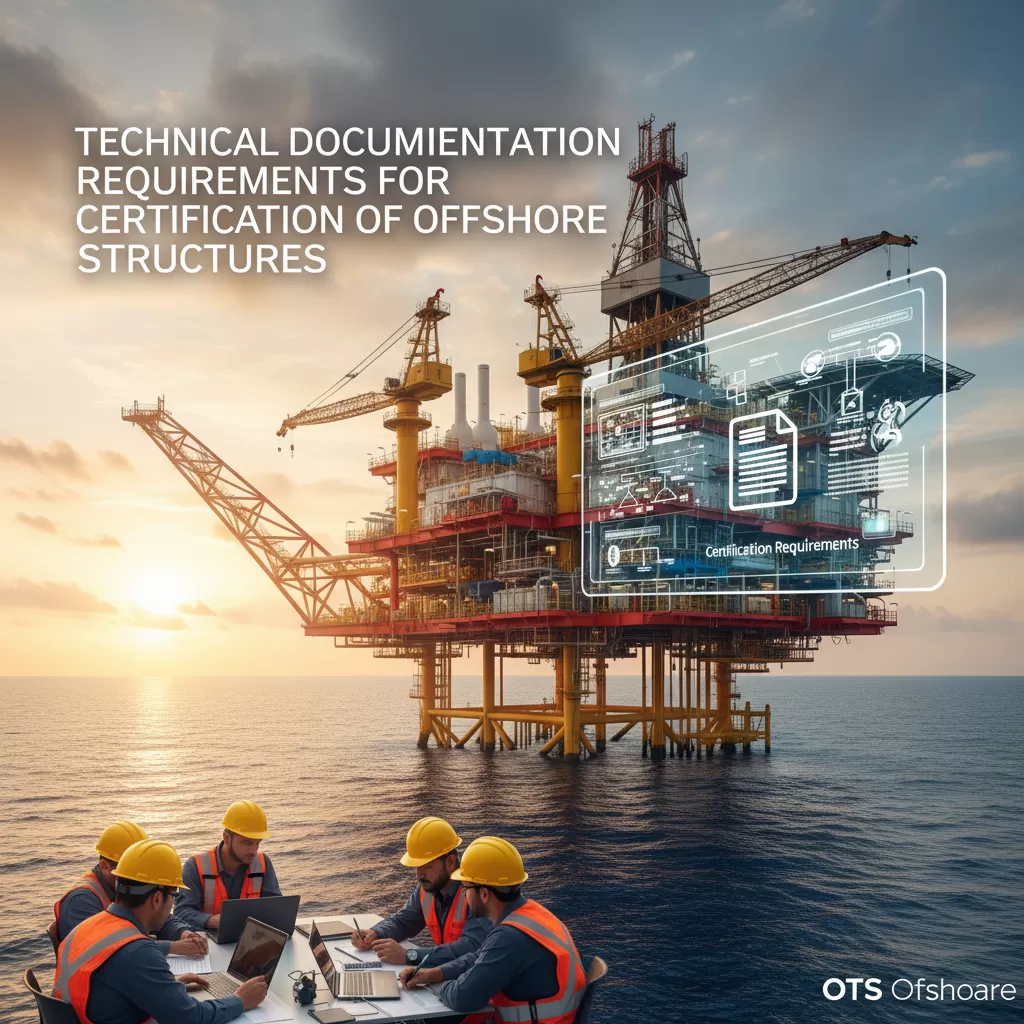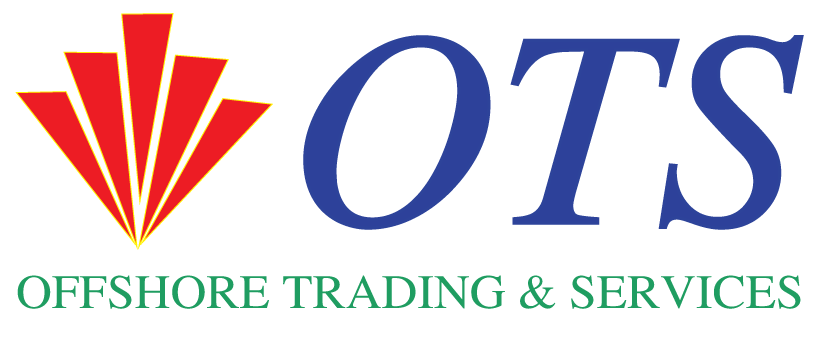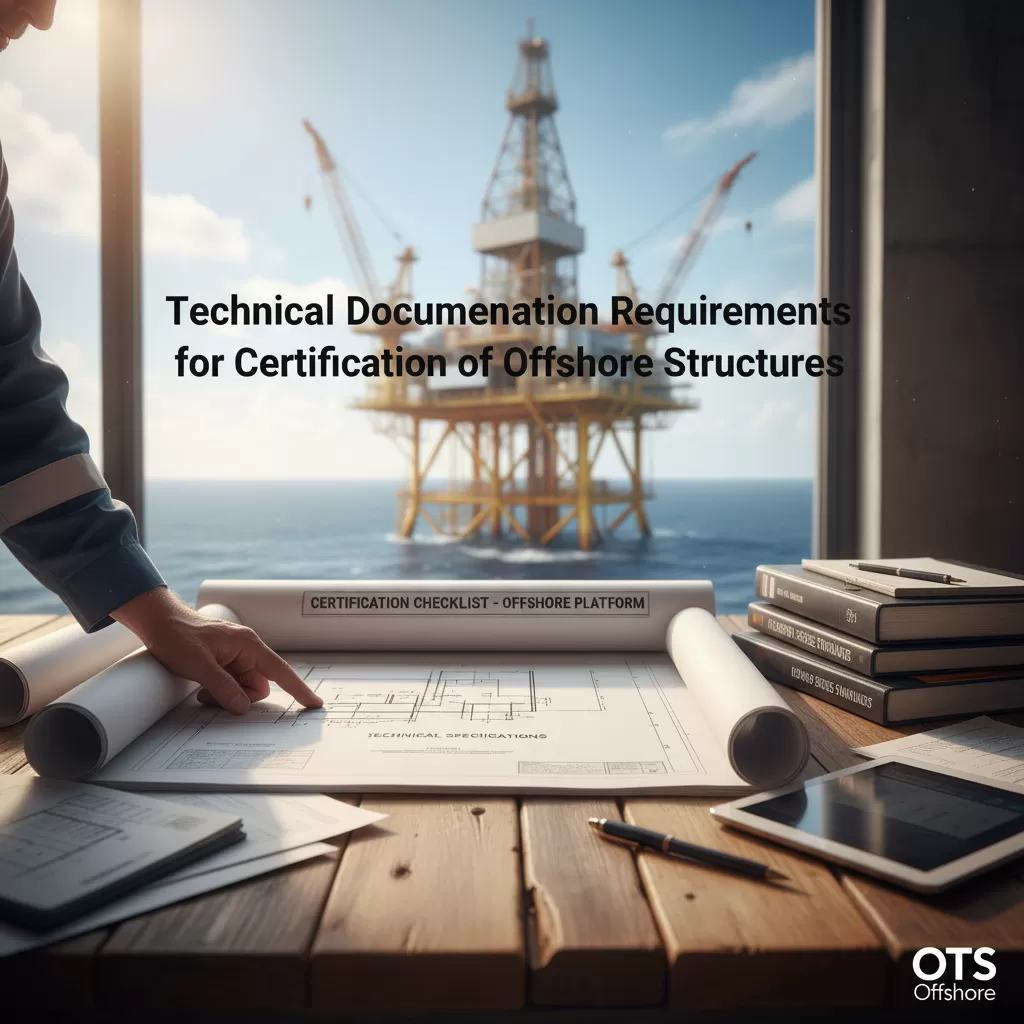Technical documentation requirements are the bedrock of successful offshore structure certification. This comprehensive guide delves into the critical elements and standards that govern the creation and submission of technical documentation for offshore installations, ensuring compliance, safety, and operational integrity.
Technical Documentation Requirements for Offshore Structure Certification: A Comprehensive Overview
The intricacies of offshore structure certification necessitate stringent adherence to specific technical documentation requirements. These requirements are not merely procedural formalities; they form the cornerstone of demonstrating compliance with regulatory standards, engineering best practices, and safety protocols. For any offshore entity, understanding and meticulously fulfilling these technical documentation requirements is paramount to achieving successful certification, maintaining operational continuity, and safeguarding personnel and the environment. This article will explore the multifaceted aspects of technical documentation requirements, including their purpose, key components, relevant standards, and the implications of non-compliance, specifically within the context of the oil and gas and broader energy sectors.
Understanding the Purpose of Technical Documentation Requirements
The primary objective behind the establishment of detailed technical documentation requirements for offshore structures is to provide irrefutable evidence that a proposed or existing installation meets all applicable safety, environmental, and operational performance criteria. This documentation serves multiple critical functions throughout the lifecycle of an offshore asset, from initial design and fabrication to installation, operation, and decommissioning.
– To validate design integrity and structural soundness against intended operating conditions and environmental loads.
– To demonstrate compliance with international, national, and industry-specific codes, standards, and regulations.
– To provide a clear and auditable record of materials, processes, and quality control measures employed during fabrication and construction.
– To serve as an essential reference for operational personnel, maintenance teams, and emergency response planning.
– To support risk assessments and hazard identification processes.
– To facilitate efficient inspection, verification, and certification by regulatory bodies and classification societies.

Key Components of Technical Documentation Requirements
The scope of technical documentation for offshore structures is extensive and varies depending on the type of installation (e.g., fixed platforms, floating production systems, subsea facilities), its location, and the prevailing regulatory regime. However, several core categories of documentation are consistently mandated.
Design Documentation
This encompasses all information related to the conceptual, FEED (Front-End Engineering Design), and detailed design phases of the structure. It is the foundational evidence of the engineering intent and methodology.
– Design Basis Memorandum (DBM): Outlines the fundamental assumptions, criteria, and codes that underpin the entire design process. It defines the environmental conditions, load cases, material selection rationale, and performance objectives.
– Design Drawings: A comprehensive set of engineering drawings, including general arrangement, structural layouts, piping and instrumentation diagrams (P&IDs), electrical schematics, and equipment details. These must be clear, accurate, and reflect the final as-built configuration.
– Calculations and Analyses: Detailed reports of all structural, mechanical, thermal, hydraulic, and process calculations. This includes finite element analysis (FE A) reports, fatigue analyses, stability calculations, and stress analyses.
– Material Specifications: Precise descriptions of all materials used, including their chemical composition, mechanical properties, manufacturing standards, and traceability requirements.
– Equipment Specifications: Detailed technical specifications for all major equipment, including turbines, pumps, compressors, drilling equipment, and process units, along with vendor data and certifications.
– Model Test Reports: For complex or novel designs, reports from wave tank tests or computational fluid dynamics (CFD) simulations to validate hydrodynamic performance and environmental response.
Fabrication and Construction Documentation
This set of documents provides evidence that the structure has been manufactured and assembled in accordance with the approved design and quality standards.
– Manufacturing Procedures: Detailed work instructions for fabrication processes, welding procedures, heat treatment procedures, and non-destructive testing (NDT) methodologies.
– Material Traceability Records: Documentation that tracks all materials from their origin, through fabrication, to their final installed location, ensuring they meet specifications.
– Welding Procedures Specifications (WPS) and Procedure Qualification Records (PQR): Evidence that welding processes are qualified and capable of producing welds meeting required mechanical properties and integrity.
– Nondestructive Testing (NDT) Reports: Records of all NDT activities performed (e.g., radiography, ultrasonics, magnetic particle testing, dye penetrant testing) along with examiner qualifications.
– Dimensional Control Reports: Documentation confirming that fabricated components and the assembled structure meet specified dimensional tolerances.
– Hydrostatic/Pneumatic Test Reports: Records of pressure testing performed on pipelines, vessels, and other pressure-containing equipment.
– Coating and Insulation Records: Documentation detailing surface preparation, application procedures, and quality control for protective coatings and insulation systems.
Installation and Commissioning Documentation
These documents verify that the structure has been safely and correctly installed and that all systems function as intended before commencing operations.
– Installation Procedures: Detailed plans and procedures for the transportation, lifting, and installation of topsides, jackets, modules, and subsea equipment.
– Load-out and Sea-fastening Calculations and Procedures: Documentation demonstrating the safe transportation of the structure to site.
– Towing and Mooring Procedures: For floating structures, detailed plans for towing and the installation of mooring systems.
– As-built Drawings and Documents: Revised drawings and documents reflecting any changes made during installation that deviate from the approved design.
– Pre-commissioning and Commissioning Reports: Detailed reports of checks, tests, and functional verification of all systems and equipment, including mechanical completion sign-offs and system start-up procedures.
– Punch Lists and Close-out Reports: Records of outstanding items and their resolution, confirming the readiness for operation.
Operational and Safety Documentation
This category covers the documentation required for the safe and efficient operation and maintenance of the offshore structure.
– Operating Manuals: Comprehensive guides for the operation of all installed systems and equipment.
– Maintenance Procedures and Schedules: Detailed instructions for routine, preventive, and corrective maintenance activities.
– Safety Case or Safety Management System (SMS): A systematic approach to identifying, assessing, and controlling safety risks associated with offshore operations. This often includes Hazard and Operability (HAZOP) studies, risk assessments, and emergency response plans.
– Emergency Response Plans (ERP): Detailed procedures for responding to various emergency scenarios, such as fire, explosions, man overboard, and environmental spills.
– Personnel Competency and Training Records: Evidence that all personnel involved in the operation and maintenance of the structure are adequately trained and competent.
– Inspection and Maintenance History: Records of all inspections, integrity assessments, and maintenance activities performed during the operational life of the structure.
Relevant Standards and Regulatory Frameworks
The technical documentation requirements for offshore structures are heavily influenced by a hierarchy of standards and regulations. Compliance with these is non-negotiable.
– International Standards Organizations: Bodies like the International Organization for Standardization (ISO) and the International Electrotechnical Commission (IEC) provide foundational standards for various aspects of engineering and management systems.
– Industry-Specific Standards: Organizations such as the American Petroleum Institute (API), the International Association of Oil & Gas Producers (IOGP), and the Society of Naval Architects and Marine Engineers (SNAME) develop standards specifically tailored to the oil and gas industry and marine engineering.
– Classification Societies: Independent organizations like DNV, Lloyd’s Register, ABS, and Bureau Veritas play a crucial role in developing and enforcing technical standards for marine and offshore structures, acting as third-party certifiers. Their rules and guidelines are often a primary driver for documentation requirements.
– National Regulatory Authorities: Each country with offshore activities will have its own regulatory bodies (e.g., the Bureau of Ocean Energy Management (BOEM) in the U.S., the Health and Safety Executive (HSE) in the UK) that set specific requirements and enforce compliance.
– Client Specifications: Major oil and gas operators often have their own detailed specifications that augment or exceed industry and regulatory standards.

The Role of Digitalization in Technical Documentation Requirements
The industry is increasingly moving towards digital solutions for managing technical documentation. This shift offers significant advantages in terms of accessibility, version control, collaboration, and data analytics.
– Electronic Document Management Systems (EDMS): Sophisticated platforms designed to store, manage, and retrieve vast amounts of technical data, ensuring version control and audit trails.
– 3D Modeling and BIM: Building Information Modeling (BIM) and advanced 3D design tools can integrate design, fabrication, and operational data, providing a “digital twin” of the structure.
– Cloud-based Collaboration Platforms: Facilitate seamless sharing and review of documents among dispersed project teams, clients, and regulatory bodies.
– Data Integration and Analytics: The ability to link different types of documentation (e.g., design reports with inspection findings) allows for more robust risk assessments and predictive maintenance.
Implications of Non-Compliance with Technical Documentation Requirements
Failure to meet the stipulated technical documentation requirements can have severe and far-reaching consequences for offshore operators.
– Certification Delays or Rejection: The most immediate impact is the potential for significant delays in obtaining or renewing certification, leading to costly downtime. In severe cases, certification may be outright rejected.
– Increased Project Costs: Remedial work to rectify design deficiencies or gather missing documentation can be prohibitively expensive and time-consuming.
– Safety Incidents and Environmental Disasters: Inadequate documentation can mask critical design flaws or operational risks, potentially leading to accidents, injuries, or environmental damage.
– Legal and Financial Penalties: Regulatory bodies can impose substantial fines and sanctions for non-compliance.
– Reputational Damage: A history of safety incidents or regulatory breaches can severely damage a company’s reputation, impacting its ability to secure future projects and investments.
– Operational Inefficiencies: Lack of clear, accurate documentation hinders effective maintenance, troubleshooting, and operational decision-making, leading to reduced asset performance.
Best Practices for Managing Technical Documentation Requirements
Proactive and systematic management of technical documentation is crucial for success.
– Early Planning and Engagement: Integrate the understanding of technical documentation requirements from the earliest stages of project conceptualization. Engage with regulatory bodies and classification societies early to clarify expectations.
– Robust Document Control System: Implement a well-defined and strictly enforced document control procedure covering document creation, review, approval, distribution, revision, and archiving.
– Dedicated Documentation Team: Assign responsibility for documentation management to a competent team with clear roles and reporting lines.
– Standardization and Templates: Utilize standardized templates and workflows for recurring document types to ensure consistency and efficiency.
– Quality Assurance and Quality Control (QA/QC): Integrate QA/QC processes specifically for documentation, ensuring accuracy, completeness, and compliance with standards.
– Regular Audits and Reviews: Conduct periodic internal audits of documentation to identify potential gaps or non-compliance.
– Training and Awareness: Ensure all project personnel understand the importance of accurate and timely documentation and their roles in the process.
– Leverage Technology: Invest in appropriate EDMS and collaboration tools to streamline document management.
The Future Landscape of Technical Documentation Requirements
As offshore energy extraction moves into deeper waters, harsher environments, and incorporates more complex technologies, the technical documentation requirements will undoubtedly evolve. Greater emphasis will be placed on:
– Advanced risk assessment methodologies and their documented outputs.
– Integration of real-time operational data with static documentation.
– Lifecycle documentation management, extending beyond operational life to decommissioning.
– Cybersecurity of digital documentation.
– Standardization for new energy sources like offshore wind, hydrogen production, and carbon capture.
The commitment to rigorous technical documentation requirements is not just a regulatory burden but a strategic imperative for the offshore energy industry. It underpins safety, environmental protection, operational excellence, and the long-term viability of offshore assets.
Challenges in Fulfilling Technical Documentation Requirements
Navigating the complex landscape of technical documentation requirements presents several common challenges for offshore operators and their contractors.
– Complexity and Volume: The sheer volume and intricate nature of the documents required can be overwhelming, demanding significant resources and expertise.
– Evolving Standards: Regulatory standards and industry best practices are not static; they are continuously updated, requiring ongoing vigilance and adaptation.
– Interdisciplinary Coordination: Effective documentation requires seamless collaboration and information exchange between various disciplines, including structural engineering, naval architecture, process engineering, electrical engineering, and safety engineering. Miscommunication or siloed data can lead to inconsistencies and errors.
– Traceability and Audit Trails: Maintaining a clear and verifiable audit trail for every decision, calculation, and fabrication step is critical, especially for safety-critical components. This requires meticulous record-keeping.
– Cost and Resource Allocation: Developing, reviewing, and managing extensive documentation sets requires significant financial investment and allocation of skilled personnel. Balancing these costs against project budgets is a constant challenge.
– Maintaining As-Built Accuracy: During fabrication and installation, changes are often inevitable. Capturing and documenting these changes accurately in “as-built” records is crucial but often overlooked or inadequately managed, leading to discrepancies that can impact future operations and maintenance.
– International Variations: For projects operating across different jurisdictions, understanding and complying with varying national regulatory requirements and documentation standards adds another layer of complexity.
– Data Integrity and Security: In an increasingly digital environment, ensuring the integrity, authenticity, and security of vast amounts of technical data is paramount. Protecting sensitive information from unauthorized access or alteration is a significant concern.
– Competency of Personnel: The quality of documentation is directly tied to the competency and experience of the individuals responsible for its creation and management. Ensuring adequate training and retaining skilled personnel is vital.
Addressing these challenges necessitates a strategic, proactive, and technologically enabled approach to technical documentation management.
The Critical Role of Third-Party Verification
Independent third-party verification, often performed by classification societies or specialized inspection bodies, is a crucial component of the certification process.
– Independent Review: These verifiers provide an objective assessment of the submitted documentation, ensuring it aligns with recognized standards and best practices.
– Gap Identification: They are adept at identifying omissions, inconsistencies, or areas where the documentation may not fully address safety or performance requirements.
– Expert Guidance: Their involvement can offer valuable insights and guidance, helping project teams to refine their documentation and address potential issues before they become critical.
– Credibility and Trust: Certification by a reputable third party lends significant credibility to the offshore structure and its operational readiness.
The technical documentation requirements are the essential bridge between engineering intent and operational reality. By understanding and meticulously managing these requirements, offshore operators can ensure the safety, integrity, and longevity of their valuable assets.








